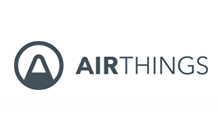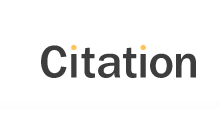Coming into effect on 1st October 2021, Natasha’s Law will require schools to label all their pre-packaged food with a full list of ingredients and allergens. With high numbers of people suffering from an allergy, this legislation is being introduced to protect allergy sufferers and to give them confidence in the food they buy.
What does your school need to know about Natasha’s Law?
 Natasha’s law covers pre-packed for direct sale (PPDS) that includes food to go such as sandwiches, salads or fruit salads that are made in a package by staff in house. At Natasha’s law, any business that is preparing, packing and selling food from the same premises need to clearly display a full list of ingredients on the packaging. There are 14 allergens that must be highlighted in the ingredient list so customers with allergies can spot at a glance.
Natasha’s law covers pre-packed for direct sale (PPDS) that includes food to go such as sandwiches, salads or fruit salads that are made in a package by staff in house. At Natasha’s law, any business that is preparing, packing and selling food from the same premises need to clearly display a full list of ingredients on the packaging. There are 14 allergens that must be highlighted in the ingredient list so customers with allergies can spot at a glance.
It is vital that all staff are aware of their responsibility to ensure the provision of correct allergen information through training. It is also paramount to define roles and responsibilities and appoint a person who monitors the ingredient formulas of every food used on a regular basis.
Is labelling needed for school packed lunches that are produced on the premises and taken away on educational visits?
If the food is pre-packed before it has been ordered by the customer, a full ingredient list is required. However, if any of the schools individually wrap any items that can essentially be taken away and consumed at a point in time where access to allergen information is not available, these items will then fall under the new rules.
According to the new rules, PPDS (pre-packed for direct sale) food will have to clearly display the following information on the packaging:
- Name of the food
- Full ingredients list, with allergenic ingredients emphasised (for example in bold, italics or a different colour).
Do we have to list all ingredients, if the food is plated on demand?
If your school is plating freshly cooked food and it is not prepacked before it is ordered, there is no need to list the ingredients in full. A reference to the presence of the 14 EU allergens is all that is needed.
Summary:
- New allergen labelling rules will come into effect from 1 October 2021
- PPDS food must clearly display certain information on the packaging
- Allergy tracking and traceability information must be readily available
- There are 14 allergens that must be declared by law
- Schools will be required to list all ingredients and allergens on food labels
- Schools are being urged by the Food Standards Agency to make these changes as soon as possible
- Schools will need to review and make some changes to their allergen processes
During ‘The Education Space’ Catering monitoring visits, I will be looking at several points such as:
- Is the label font text size correct and visible?
- Does the school serve Pre-Packaged foods for direct sale (PPDS)? If yes, does it meet new labelling requirements?
- What is the procedure for school packed lunches that are produced on the premises and taken away on field educational visits/excursions?
- Has the HACCP been amended to the new Natasha’s law?
- Has the ordering procedure changed? What changes have been made?
- Do kitchen staff know the new PPDS labelling requirement?
- Do the kitchen staff check the suppliers labelling on the delivery to check if the correct manufacturer's goods were delivered?
- Is there a food allergen management process in place?
- Do you ensure that deliveries meet the same specification as the orders?
- If a substitution was made, has the allergen information been checked and recorded and dated in the menu?
- Is the information communicated through to the kitchen staff?
- If the kitchen runs out of something, are they allowed to pop out to a local supermarket and pick something up? If they do, are they sure to make sure of any changes in the ingredients in those purchased products?




